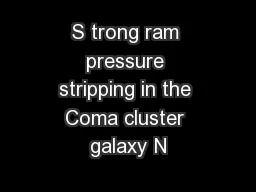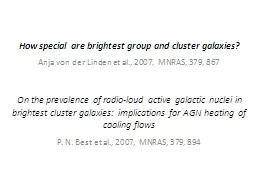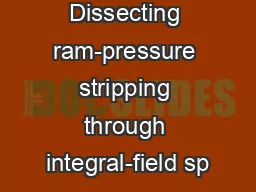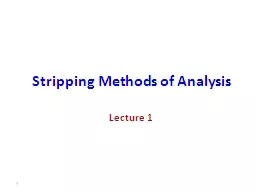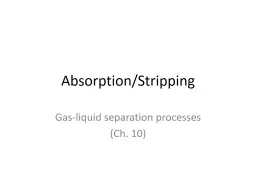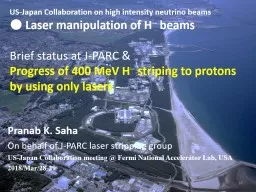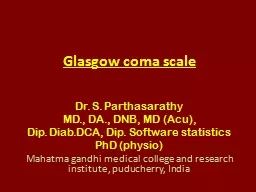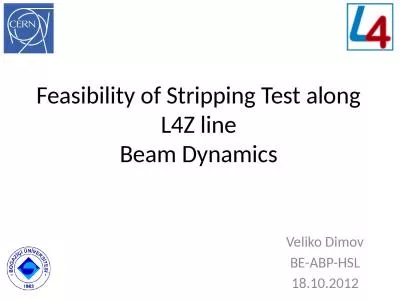PPT-S trong ram pressure stripping in the Coma cluster galaxy N
Author : pamella-moone | Published Date : 2016-07-21
dense cloud decoupling amp evidence for magnetic binding in the ISM Jeff Kenney Yale Anne Abramson Hector BravoAlfaro Jacqueline van Gorkom partially strips large
Presentation Embed Code
Download Presentation
Download Presentation The PPT/PDF document "S trong ram pressure stripping in the Co..." is the property of its rightful owner. Permission is granted to download and print the materials on this website for personal, non-commercial use only, and to display it on your personal computer provided you do not modify the materials and that you retain all copyright notices contained in the materials. By downloading content from our website, you accept the terms of this agreement.
S trong ram pressure stripping in the Coma cluster galaxy N: Transcript
Download Rules Of Document
"S trong ram pressure stripping in the Coma cluster galaxy N"The content belongs to its owner. You may download and print it for personal use, without modification, and keep all copyright notices. By downloading, you agree to these terms.
Related Documents

